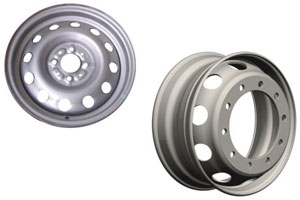Buying, fitting and Maintaining allow wheels
Whether you are upgrading your car tyres, or simply replacing the rims that are currently on them now, choosing an allow wheel is an excellent option. These lightweight tyres are excellent for performance and look fantastic. Here we will help guide you through the process of not only buying and installing your new alloy wheels, but also maintaining them properly throughout the year!
Buying Alloy Wheels
Before you begin searching for alloy wheels, understand that there are several types and styles of alloy. Aluminum and magnesium alloy are similar in many respects, however aluminum is good for everyday cars and street cars, while mag wheels are preferred for performance and racing cars.
 The aluminum is easier to bend and still helps disperse the heat for improved break performance. Additionally these aluminum wheels also maintain their light weight and durability! Mag wheels, on the other hand do not have as much flexibility as aluminum and therefore have a much shorter life span making them unsuitable for everyday use. Neither aluminum nor mag alloy wheels will be cheap wheels, however, out of the two, the aluminum is much more affordable and has a longer life span.
The aluminum is easier to bend and still helps disperse the heat for improved break performance. Additionally these aluminum wheels also maintain their light weight and durability! Mag wheels, on the other hand do not have as much flexibility as aluminum and therefore have a much shorter life span making them unsuitable for everyday use. Neither aluminum nor mag alloy wheels will be cheap wheels, however, out of the two, the aluminum is much more affordable and has a longer life span.
Once you have decided on the alloy type that is appropriate for your tyres, you can then decide on the style. There are three main styles for alloy wheels:
- Drop wheels – inside is recessed towards the axel for a 3D look
- Rotating wheels – centre part rotates when the car stops to give the impression it’s still spinning
- Spoke Wheels – traditional option with five or more spokes on the rim
Fitting Alloy Wheels
If you are planning on installing the alloy wheels yourself, then understanding how to properly fit them will help ensure that they are adequately installed and meet all the legal and safety requirements. Below are three crucial pieces of information you will have to know:
PCD – PCD is an acronym meaning pitch circle diameter. This is essentially the diameter of the circle that is created by the bolt holes in the wheel.
Offset – The offset is how far out the wheel needs to be from the actual sides of your vehicle. You don’t have to be exact on this number. In fact, you can actually go a few mm outside without there being any major noticeable differences or issues though don’t go more than 5mm-7mm out.
Bore – The bore is basically the diameter of the centre hole that is directly in the middle of your rim.
Maintaining Alloy Wheels
Taking care of your alloy wheels ensures that they maintain their lustre and avoid any corrosion or unnecessary damage. Here we have some great tips on how to clean and properly maintain your new alloy wheels:
- Avoid acid based cleaners as they will remove lacquer
- Use a sponge or a rag to lightly rub off any dirt or marks
- Apply wax specifically for alloy surfaces
- Don’t clean wheels directly when done driving
- Avoid hot steam while cleaning
- Watch automated washes because they often use acidic cleaners
























